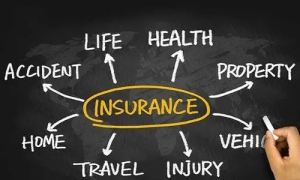Car accidents can be distressing and disorienting, but understanding the steps to take after a car accident in the UK is crucial to ensure a smooth claims process and receive the necessary support and compensation. In this post, we’ll guide you through the process of making a claim if you find yourself in a car accident in the United Kingdom.

Making a claim if you’re in an accident
Step 1: Prioritize Safety
Immediately following a car accident, ensure the safety of everyone involved. Move your vehicle to a safe location if possible, and check for injuries among all parties. In cases of injuries or significant damage, call 999 or 112 to request emergency medical assistance.
Step 2: Document the Accident
Gathering information and evidence is essential for the claims process. At the scene, remember to:
- Take photographs of the accident scene, including vehicle damage, license plates, and the road conditions.
- Exchange contact and insurance information with the other driver(s) involved.
- Collect contact details from any witnesses to the accident.
- Make notes about the time, location, and any other relevant details about the accident.
Step 3: Contact the Police
In the UK, it is necessary to contact the police if there are injuries, significant property damage, or if the accident obstructs the road. They will create an accident report and provide you with a reference number.
Step 4: Contact Your Insurance Company
Notify your insurance company about the accident as soon as possible. They will guide you through the claims process, and you will need to provide them with the information you collected at the scene, including any police reports.
Step 5: Follow the Claims Process
Your insurance provider will guide you through the claims process, which typically involves:
- Completing and submitting the necessary claim forms.
- Providing documentation such as accident photos, estimates for vehicle repairs, and medical bills (if applicable).
- Working with an adjuster to assess the extent of vehicle damage and injuries.
Step 6: Maintain Records
Keep detailed records throughout the claims process. This includes documenting all communication with your insurance company, including phone conversations, emails, and other correspondence. Retain copies of all relevant documents, receipts, and estimates.
Step 7: Be Patient
The duration of the claims process can vary depending on the complexity of the accident and the extent of the damages. Stay patient and stay in regular contact with your insurance company for updates on the progress of your claim.
Step 8: Review Your Settlement
Once your claim is settled, carefully review the details of the settlement to ensure you are content with the outcome. If you have any concerns or questions, don’t hesitate to discuss them with your insurance company.

If the accident wasn’t your fault
If the accident wasn’t your fault you may be able to use a credit hire company rather than your insurance company.

Step 1: If the driver is uninsured or can’t be identified
You can claim on your own insurance if you have comprehensive cover. The Motor Insurers Bureau (MIB) may also be able to settle your claim if the driver is uninsured. This includes cases where the driver has broken their policy conditions.
You won’t be able to claim if you are an injured passenger of an uninsured driver and you knew, or should have known, that they weren’t insured.
Step 2: Repairing your vehicle
Your insurer may want to send someone to inspect your vehicle before you get it repaired. They may ask you to use an approved repairer or provide them with estimates before getting repairs done.
If your insurer decides that it is not economical to repair your vehicle they should offer you the vehicle’s market value. They normally then take the vehicle from you but you may be able to negotiate to keep it. This is known as an insurance write off.
Step 3: If your car is a write-off
If your insurer decides that it is not economical to repair your car they should offer you the car’s market value at the time of the accident. This is known as an insurance write off. They normally then take the car from you but you may be able to negotiate to keep it.
Step 4: Minor damage to older cars
If you have an accident in an older car with minor damage, you may decide not to claim on your insurance in case the car is written off. Then you can get the car repaired yourself and keep it.
Car accidents can be unsettling, but understanding how to make a claim is essential for safeguarding your interests and obtaining the compensation you are entitled to. Prioritize safety, collect information at the scene, and work closely with your insurance provider to effectively navigate the claims process. With the right steps and guidance, you can seek a fair resolution after a car accident in the UK.






